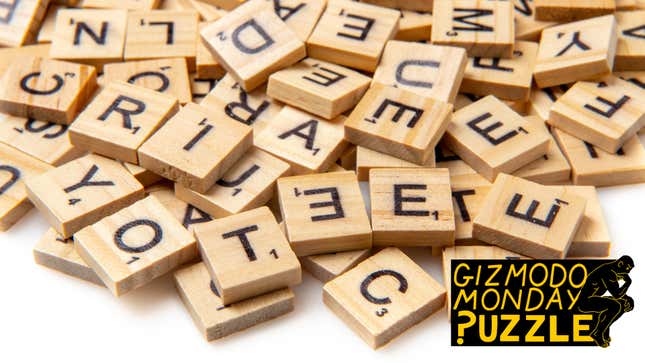
What are the shortest words with a given number of syllables? “I” and “a” each contain one letter and one syllable, which is the tightest ratio we could realistically expect. Are there any two-letter words with two syllables? The only one I’m aware of (not counting things like “BB,” as in “BB gun”) requires that we allow proper nouns: Io, Jupiter’s closest moon (pronounced “eye-oh”). I don’t think we can extend the 1:1 ratio to three letters. Some four-letter words with three syllables include Ohio, Iowa, and iota. Excluding some archaic obscurities, the next best ratio I’ve come across has a whopping five syllables with only seven letters: the geographical region Oceania. Let me know in the comments if I’ve missed any good ones.
We have a couple of puzzles today featuring words with unusual syllabic properties.
Did you miss last week’s puzzle? Check it out here, and find its solution at the bottom of today’s article. Be careful not to read too far ahead if you haven’t solved last week’s yet!
Puzzle #5: Strange Syllables
- Find a one-syllable word that becomes a three-syllable word when one letter is added to the end of it. There are at least three valid answers that are common English words and not proper nouns.
- Homophones are words that are spelled differently but sound the same. There are few precious examples of four words that are all homophones of each other (like knew, new, gnu, and the Greek letter nu). The puzzle is to find something even rarer: four two-syllable words that are all homophones of each other. Again, no proper nouns.
I’m only aware of one satisfying answer to the homophone puzzle (a couple of others only work in some regional accents). Although most readers will have encountered all of the solution words, they may not have realized that they’re spelled differently. Because generating words from thin air is difficult, I’m going to give a hint. If you’d like to attempt the puzzle without a hint, don’t read on.
.
.
.
.
.
Two of the four words in the homophone puzzle are units of measurement. It’s a common misconception that they measure the same thing but, in fact, they’re completely distinct (and spelled differently!) Be extra wary of spoilers in the comments this week.
Do you know a cool puzzle that I should cover here? Send it to me at [email protected]
Solution to Puzzle #4: Lewis Carroll’s Pillow Problem
Last week, I challenged you to a probability puzzle from the mind that brought us the Mad Hatter. Many people have a strong intuition that there is a 1/2 chance that the marble remaining in the bag is white. There was a 1/2 chance at the beginning, and your gut might tell you that tossing in a white marble and then picking a white marble out of the bag should not change this likelihood. This instinct turns out to be wrong. The actual probability that a white marble remains is 2/3.
To make progress on this type of problem, it’s often useful to list out all of the possibilities. After putting the second marble in the bag, it either contains two white marbles or one white and one black. We’ll call these potential situations bag A and bag B:
- Bag A contains: Original White Marble and New White Marble
- Bag B contains: Original Black Marble and New White Marble
We don’t know which of these two bags we’re holding. When we observe that we picked a white marble from the bag, there are three possibilities:
- We’re holding bag A and picked the Original White Marble
- We’re holding bag A and picked the New White Marble
- We’re holding bag B and picked the New White Marble
In two of these three possibilities, the remaining marble in the bag is white (the ones with bag A). This is how we conclude that there is a 2/3 chance that the remaining marble is white. Intuitively, what’s happening here is that we’re more likely to pick a white marble from the bag if we’re holding bag A. The flip side of this is that when we pick a white marble, it serves as evidence that we’re more likely to be holding bag A than bag B. Since the bag A case guarantees that the remaining marble is also white, the observation of pulling a white marble actually increases the probability that the remaining marble is white.
Probability can be notoriously counterintuitive, which makes it great fodder for puzzles. This will not be the last probability puzzle I cover here, and they will grow curiouser and curiouser…
Let us know how you did. And let us know how we’re doing! We would love to hear your feedback as we continue to shape the future of this series.

